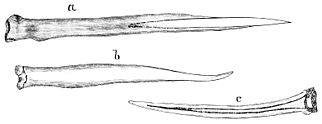
I just like this picture and no, it's not a sewing needle.
Even a small thing like a hand sewing needle has had a role in the history of humans. Some facts and history about the hand sewing needle:
- The first sewing needles were made from bone and were used to sew animal hides together. The oldest known bone ones were found in what is now southwestern France and has been estimated to be over 25,000 years old.
- Needles made from copper, silver and bronze were used in ancient Egypt.
- The oldest iron needle known was found in what is now Germany, and dates back to the 3rd century B.C.E.
- Bookbinders and shoemakers used ones made from hog bristles in the Middle Ages.
- Native Americans used porcupine quills and the pointed end of agave leaves for sewing needles. The fibers of the agave leaf were also used for thread.
- Metal needle making was perfected by Muslims in Spain in the 11th century. Spanish Muslims were some of the most knowledgeable medical doctors in the world at the time, and had perfected many surgical techniques that required needles for suturing.
- When the Muslims were driven out of Spain in the 15th century, they took the knowledge of needle making with them to Arab lands. Muslims returned to making them, and Arab traders took them to Europe.
- Europe learned the art of needle making from Arab needle makers, and it came to England in the 17th century. Before this time, metal needles were made in Europe by the local blacksmith, and resulted in very crude needles.
- The knowledge of needle making was also used to make fish hooks in England. The country became well known for high quality fish hooks as well as sewing needles in the middle of the 17th century.
- Metal needles were handcrafted before the industrial age. The process began with cutting wire long enough to make two needles. Then points were ground on either end of the wire, the wire was flattened in the middle and eyes punched out. The needles were then separated. This operation is still followed today, but machines now do the work instead of humans.
- Around 1850 needle making machines began producing needles and turned needle making from a cottage industry into an industry done in factories. By 1866 there were 100 million needles being made in England a year.
- The English town and district of Redditch in central England became the center of the world's needle production in the 19th century. The craftsmanship of the needles made there was so great that a foreign manufacturer sent a hypodermic needle to Redditch claiming that it was smaller than Redditch needle makers could produce. The needle was sent back to the manufacturer with a needle made by Redditch craftsman so small that it fit inside the foreign manufacturer's!
- Needle making is still being done in the Redditch area and other places in England.
 |
This artifact was used for stitching hides. Stone Age technology included delicate sewing needles made of bone with punched eyeholes. They were probably used in tandem with thread fashioned from plant fibers or animal sinew. Archeologists have found bone needles dating to within the past 20,000 years in Europe and North America, where they might have facilitated clothing and boat production.pbs,Nova |
Article Source: http://EzineArticles.com/1009010

































.jpeg)
























great info here. looks like an old iron in the first picture. my grandmother had one similar and I can remember how heavy they were.
ReplyDeleteThanks deanna. You know, I'm not quite sure how to reply on comments yet. Hmmm.
ReplyDeleteHenrietta I don't think blogger lets you reply to individual comments which is one thing I dislike about them even though that's who I use also. Love this history of the needle. So nice to know an art historian. Love your blog!!!
ReplyDeleteHi Tammy. Thanks for stopping by. So you are the person behind the Seared Blue Hair. I have to tell you that I read your blog. Lovely photography and such a beautiful sensibility. Thanks again. I think blogger is easier for me to use...I couldn't do anything much on typepad. Glad to hear you are a blogger too!
ReplyDeleteHenrietta, I am so glad and flattered to know tha t you have been to my blog. I am really missing blogging lately. I was just going to post something recently and my computer has died. I am taking it to the store tomorrow to repair it myself where they let you do that. So .. again I am kept away but I am a bit lost without the connection. I am at a friends trying to catch up on email. Hope my computer is up running soon!! Again glad to meet you here and to know you've read my blog!! :)
ReplyDeleteThank you for such an informative post! I have an old black iron, similar, somewhere around here!
ReplyDelete